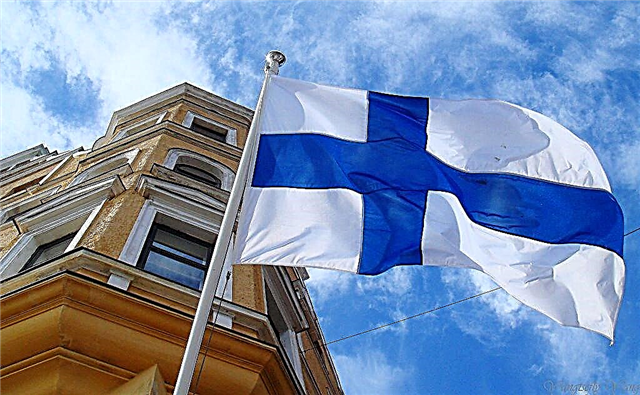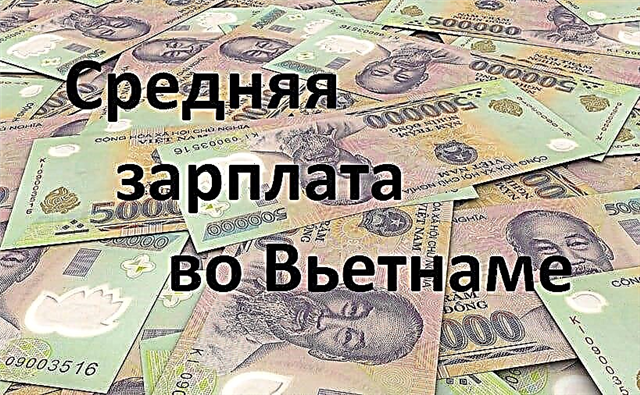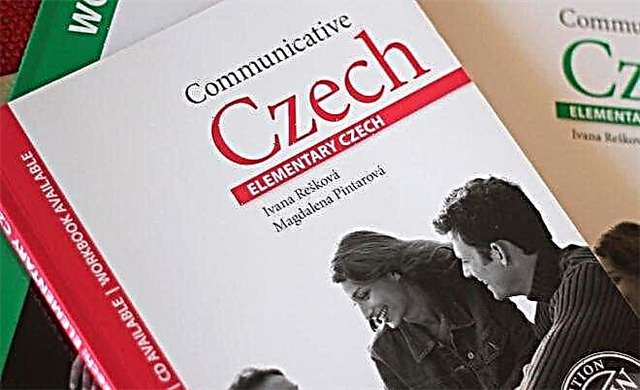Czech is the sixty-sixth most widely spoken language in the world. Twelve million people consider it their native language, and hundreds of thousands of students study this language as a second foreign language. Czech belongs to the group of Slavic languages - conversations in Czech become clear to a Russian-speaking tourist almost immediately after arriving in the country. Despite its general clarity, the Czech language is characterized by grammatical subtleties, difficulties and exceptions that are worth knowing in order to master it perfectly.

How the Czech language developed
Most tourists before going to the Czech Republic are interested in what language the citizens of this country speak. Since the Middle Ages and until now, Czech is officially considered the official language of the Czech Republic.
There are three periods of the formation of the Czech language: Old, Old and New Bohemian.
Until the beginning of the 10th century, there was no written language in the Czech language. For the first time, Czech words and phrases begin to appear in German literary works and books in Latin at the beginning of the 13th century.
Full-fledged books in Czech appeared in the first half of the 15th century, when Czech grammar was published in Prague. In the same period, a proposal appeared to introduce foreign diacritical marks into the spelling of Czech words, which conveyed sounds in writing that have no analogues in the Latin alphabet. This prescription was accepted, but it was only in the 16th century that it was possible to permanently supplant the digital combinations of letters that convey sound by writing several letters.
The Czech writing served as the basis for the Slovak, which was formed much later. And also the Czech alphabet was used to try to romanize some Slavic languages: Russian, Ukrainian, Croatian, Belarusian.
There are four dialects in the official language:
- Czech dialects;
- Central Moravian dialects;
- North Moravian dialects (also known as Silesian);
- Slovak dialects.
The Latin spelling of the alphabet is used to convey in writing the characteristics of all four dialects of Czech.
Also, the Czech language is divided into literary, book, colloquial and general Czech. Most of the locals use the common Bohemian language. The basis of the literary language is the spoken Central Bohemian dialect, which belongs to the interdialects of the central part of the country.
General rules of Czech grammar and syntax
The rules that define this national language are distinguished, which distinguish it from other representatives of the Slavic group.
- The language includes ten phonemes, differing in length, consonants are divided into voiceless and voiced.
- The stress always falls on the first syllable of a word, this also applies to combinations of nouns with prepositions (for example, "ˈdo Prahy" - "to Prague", "ˈdo nás" - "to us").
- There are only two numbers - singular and plural, cases - seven, which coincide with Russian cases.
- Nouns are declined according to gender, adjectives according to hard and soft types.
- Numerals are assigned five basic categories according to their lexical meaning.
- There are ten types of pronouns, and their short forms are often used in colloquial speech.
- As for the verbs, they distinguish between perfect and imperfect types, which form four tenses - present, past, future and infinitive.
- Regular verbs are declined according to the general rules of five separate classes, while irregular verbs are classified as exceptions and require memorization.
- The order of words in sentences is determined by meaning. At the end of the sentence, put the noun or verb that is worth emphasizing. For example, the sentence: “Danylo miluje Anju” (Danilo loves Anju) conveys whom Danilo loves, and the sentence: “Anju miluje Danylo” (Anya loves Danilo) conveys who loves Anya.
Interesting features of the Czech language
Despite the similar phonetics of the Russian and Czech languages, some phrases in Czech sound incredibly comical for Russian speakers. For example, "shark" will sound like "zhrapok", "theater" - "divadlo", "bachelor" - "baby". The Czechs will call the plane “letadlo”, the persimmon “kaki”, and the cucumber “butt”.
There are also false friends of the translator - words that, with the same sound, have antonymic meanings. These include the word "čerstvý" which means fresh in Czech, "ovoce" which translates as fruit and "úžasný" conveying intense admiration.
Also, for the Russian ear, Czech is unusual for words with a large number of consonants in one word or at the junction of words. For example, the word "čtvrthrst" meaning "a quarter of a handful" consists of ten consonant letters.
One of the most famous "consonant" sentences in Czech is "Strč prst skrz krk", which translates to "stick your finger down your throat." This proposal is included in all textbooks and tutorials as a textbook example of the phonetic rigidity of the Czech language. It is one of the few languages in the world that uses such sound combinations.
Basics of the Czech language for tourists
Despite belonging to the same Slavic language group, Russian and Czech differ significantly. Before arriving in this country, it is recommended to master the minimum number of everyday phrases. This will make you feel more comfortable while communicating with Czechs and get help if needed.
If the language is difficult for you, don't worry: most Czechs communicate with tourists in Russian.
| Phrase | Translation |
|---|---|
| Everyday: | |
| Good day! | Dobri den! |
| How are you doing? | Yak sy mash? |
| OK, thanks. | Dobzhe, dyakui. |
| Please. | We ask |
| Goodbye! | At shledanou. |
| Do you speak Russian (English, German)? | Peck rushtina (English, German)? |
| Can you help me? | Can you help me? |
| Well no. | Ano / not. |
| Sorry. | Prominte. |
| Tourist: | |
| Is there information for tourists here? | What tourist information? |
| I need a map of the city. | Mate minesta's plan. |
| When does the exhibition / museum open? | Where are the exhibitions / museums geared? |
| In the shop: | |
| What is the price? | Colic then wait? |
| It is very expensive. | Same mots dragee. |
| I do not like. | Do not libi. |
| I'll take it. | Wezma si that. |
| Give me 1 kg of cheese. | Give me one kilo of sire. |
| In the restaurant: | |
| Give me a menu, please. | Yidelny leaflets, please. |
| Bread / tea / coffee with milk. | Bread / tea / kava with mlek. |
| Red / white wine. | Cervene / bile wine. |
| Soup / fish / meat / salad / dessert. | Vole / fish / maso / salad / decert. |
| Breakfast lunch dinner. | Snidane / obied / evening. |
| At the hotel: | |
| I made a reservation with you. | Mom, you have a reservation. |
| Do you have a double room? | Mate, are the two-luzhkovy rest free? |
| With balcony / shower / WC. | With balcony / sprhow / vetse. |
| How much does a room cost per night? | Colic stand still on the butts? |
| Can I see the room? | Can I retire? |
| Where can I park my car? | Where to park the moss? |
| In different situations: | |
| Where is the bank / exchanger here? | Where is the bank / exchange point? |
| Where is the phone here? | Where can I phone? |
| I need a doctor. | Ask the doctor. |
| Call the police / ambulance. | Sign up asking the police / security service. |
| Where is the police station? | Where is the commissary polysyne? |
Basics of learning Czech
Perception and knowledge of the language are different concepts. Interlanguage homonyms, dialects, the presence of diacritics and the peculiarities of the construction of sentences interfere with the study of Czech for the majority of Russian-speaking students.
To learn Czech, you need to abstract yourself from the grammatical rules, phonetics and syntax of the Russian language.
The main rule of successful learning is to always know and remember that the Czech language is difficult and independent.
If you plan to learn this language on your own, start by listening to songs and films in Czech, then connect the simplest self-study guide, if possible, communicate with native Czech speakers in special applications.
The best results in the study of Czech are achieved by students who attend special courses. These language schools pay more attention to dialects, which represent independent units of the Czech language, teach the correct pronunciation. Only here you will be able to perfectly understand the intricacies of grammar and learn the language faster, since you will have to speak Czech all the time.
Conclusion
The Czech language, being the official language of the Czech Republic, is also found in the Czech diasporas in neighboring countries. This language has come a long historical path of formation, therefore, it includes four different dialects and special grammatical rules.
If you are planning a trip to the Czech Republic, learn everyday phrases in this language in advance in order to feel comfortable talking with native speakers.











